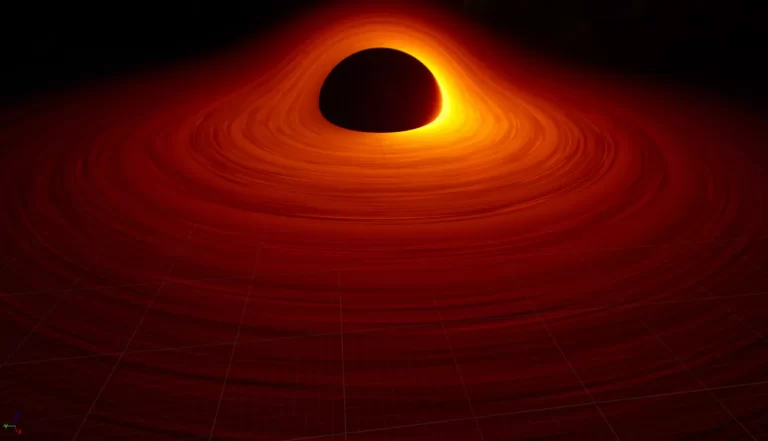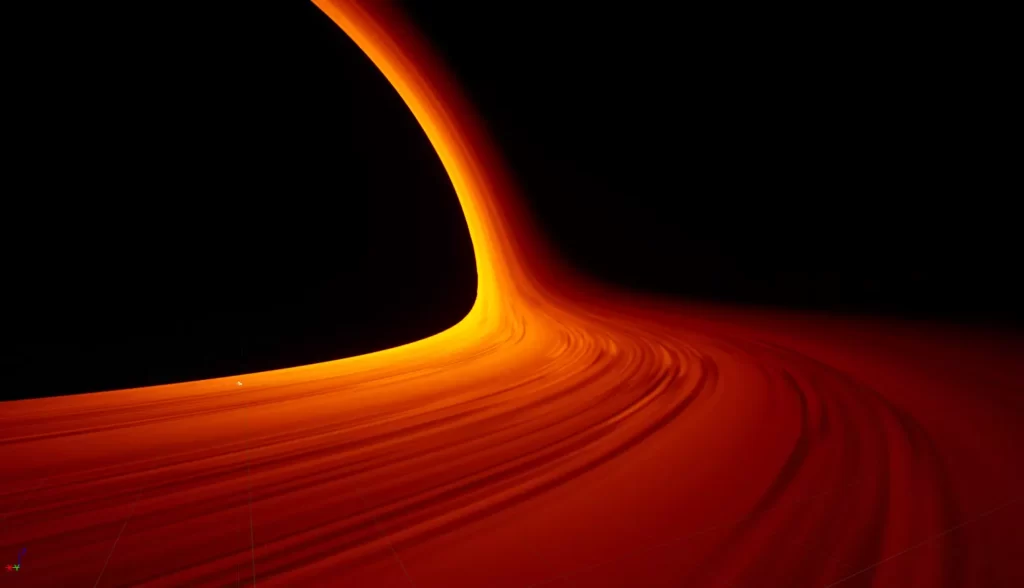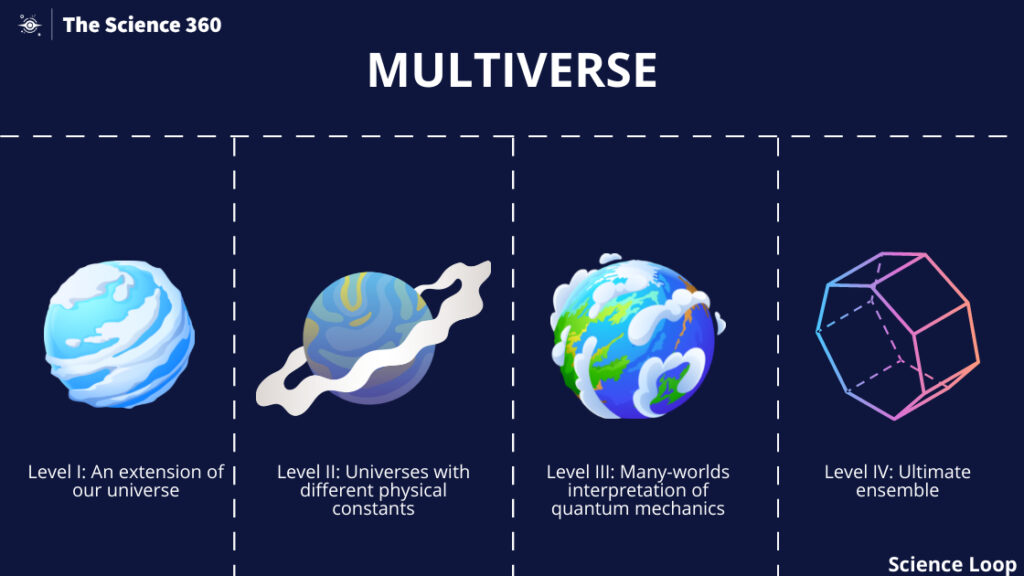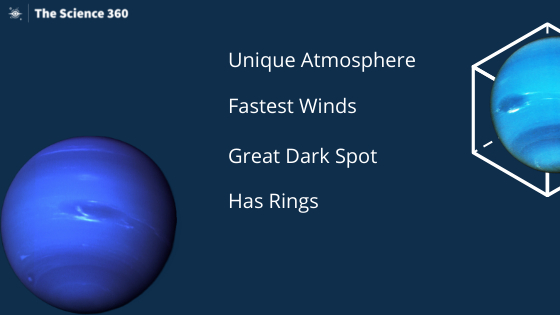Physics, the study of matter and energy, can be an intriguing and complex subject. However, that doesn’t mean it has to be all serious! In fact, physics can inspire some incredibly humorous and witty jokes that bring a smile to your face. In this blog post, we’ve compiled 50 hilarious physics jokes along with simple explanations to tickle your funny bone and maybe even make you appreciate the quirky side of this fascinating scientific field. So, get ready to laugh and learn as we dive into the world of physics jokes!
50 Hilarious Physics Jokes That Will Make You Laugh
1. Why did the scarecrow become a successful physicist?
Because he was outstanding in his field!
Explanation: The scarecrow, standing in a field, is a play on words. Being “outstanding” refers to being exceptional or brilliant in a particular field of study.
2. What did the physicist say when he found two isotopes of helium?
“HeHe!”
Explanation: The chemical symbol for helium is “He,” and when two isotopes are found, it becomes “HeHe,” which sounds like laughter.
3. What did the physicist say when they tripped and fell?
“I have a tendency to accelerate towards the ground!”
Explanation: In physics, acceleration refers to the rate of change of velocity. The joke humorously suggests that the physicist, even when falling, comments on their tendency to accelerate towards the ground, applying the concept of acceleration to their fall.
4. How do physicists stay warm in the winter?
They put their hands in their pockets and raise their body temperature to absolute 0!
Explanation: Absolute zero is the lowest possible temperature, at which particles have minimal energy. The joke humorously suggests that physicists can reach absolute zero by putting their hands in their pockets.
5. Why did the photon bring a map to the party?
Because it couldn’t find its way without spin!
Explanation: In physics, a photon is a particle of light that can possess a property called “spin.” The joke implies that the photon needs its spin to navigate or find its way.
6. Why did the chicken go to the physicist?
To learn the “quantum cluck”!
Explanation: “Quantum” is a term used in physics to describe the behavior of particles at the atomic and subatomic levels. The joke plays on the word “cluck” (sound made by a chicken) and replaces it with “quantum” to create a pun.
7. Why did the student take a ladder to the exam?
Because the questions were “up” for debate!
Explanation: In physics, “up” often refers to the direction opposite to gravity. The joke suggests that the questions in the exam were challenging or debated, so the student needed a ladder to reach them.
8. Why did the physicist bring a candle to the lab?
To light up their experiments and “illuminate” their ideas!
Explanation: The word “illuminate” has a double meaning here. It refers to both lighting up the experiments with a candle and shedding light or bringing clarity to their ideas.
9. What did one electron say to the other electron?
“Don’t be so negative!”
Explanation: Electrons are negatively charged particles. The joke uses the word “negative” in a literal sense, asking one electron not to have a negative attitude.
10. Why did the physicist enjoy watching cooking shows?
They loved seeing the “heat capacity” in action!
Explanation: Heat capacity is a property of substances that describes how much heat energy they can absorb or store. The joke humorously suggests that the physicist enjoys observing heat capacity while watching cooking shows.
11. How did the physicist fix their broken bike?
They applied “quantum mechanics” and simply rode it “wave-particle”!
Explanation: Quantum mechanics is a branch of physics that describes the behavior of particles at the microscopic level. The joke combines the concepts of quantum mechanics and the duality of particles (wave-particle) to create a humorous solution for fixing a bike.
12. Why did the physics book go to the gym?
It wanted to gain “potential” energy!
Explanation: In physics, potential energy is the stored energy an object possesses due to its position or configuration. The joke suggests that the physics book wanted to
gain potential energy by going to the gym, where people typically work on their physical fitness.
13. What did the physicist say when asked about their love life?
“It’s not constant, but it has a lot of momentum!”
Explanation: In physics, “constant” refers to something that remains the same, while “momentum” refers to the quantity of motion possessed by an object. The joke implies that the physicist’s love life is not constant but experiences a lot of changes and momentum.
14. Why did the physicist bring a ladder to the bar?
Because the drinks were on a “high potential”!
Explanation: In physics, “high potential” refers to a location with a higher amount of stored or potential energy. The joke suggests that the drinks were placed on a high shelf or bar, requiring a ladder to reach them.
15. Why don’t quantum physicists need to count sheep to fall asleep?
They can exist in multiple states simultaneously!
Explanation: Quantum superposition is a principle in quantum physics that states particles can exist in multiple states simultaneously. The joke humorously suggests that quantum physicists can also be in multiple states simultaneously and, therefore, don’t need to count sheep to fall asleep.
16. What do you get when you cross a mosquito and a mountain climber?
Nothing, you can’t cross a vector with a scalar!
Explanation: In physics, a vector is a quantity that has both magnitude and direction, while a scalar only has magnitude. The joke plays on the word “cross” to highlight that it’s not possible to combine a vector and a scalar.
17. How do physicists organize their bookshelves?
They use the “strong” force to keep them in order!
Explanation: In physics, the strong force is one of the fundamental forces that binds particles within atomic nuclei. The joke humorously suggests that physicists use the strong force (strength) to organize their bookshelves and keep them in order.
18. What did the physicist say when they won the lottery?
“I won the ‘mega-electron-volt’ jackpot!”
Explanation: In physics, the electron-volt (eV) is a unit of energy commonly used to measure the energy of subatomic particles. The joke replaces the usual “mega-jackpot” with “mega-electron-volt” to create a pun.
19. Why did the physics student bring a ladder to the lecture?
Because the professor said the topic was “highly elevated”!
Explanation: In this joke, the wordplay revolves around the term “highly elevated.” It suggests that the topic being discussed in the lecture is complex or at an advanced level, hence requiring a ladder to understand it.
20. Why don’t electrons ever get caught for speeding?
Because they are always “negatively charged”!
Explanation: Electrons have a negative charge, and in many jurisdictions, vehicles with negative charges (like speeding tickets) are not issued. The joke cleverly connects the negative charge of electrons to the idea of avoiding speeding tickets.
21. Why did the physicist bring a ladder to the bar?
Because the drinks were on a “high potential”!
Explanation: In physics, “high potential” refers to a location with a higher amount of stored or potential energy. The joke suggests that the drinks were placed on a high shelf or bar, requiring a ladder to reach them.
22. Why did the physicist refuse to play hide-and-seek?
Because they didn’t want to be bound by the “Heisenberg uncertainty principle”!
Explanation: The Heisenberg uncertainty principle in physics states that it’s impossible to simultaneously know both the exact position and momentum of a particle. The joke humorously suggests that the physicist doesn’t want to participate in a game where their position is uncertain.
23. How does a physicist party?
They “boogie down” with particles and anti-particles!
Explanation: In particle physics, there are particles and anti-particles, which have opposite charges. The joke playfully suggests that physicists party by dancing with particles and anti-particles, or in other words, they “boogie down” with them.
24. What did the physicist say to their friend who broke their smartphone?
“Don’t worry, it’s just a matter of ‘matter-energy’ equivalence!”
Explanation: The famous equation E=mc² in physics represents the equivalence of matter and energy. The joke cleverly uses the term “matter-energy” equivalence to reassure the friend that the broken smartphone is not a big deal.
25. Why did the physics teacher go to the art museum?
To appreciate the “beautiful symmetry” in both art and nature!
Explanation: Symmetry is a concept found in both physics and art, referring to balanced proportions and arrangements. The joke suggests that the physics teacher went to the art museum to appreciate the beautiful symmetry found in both art and nature.
26. What did one charged particle say to the other?
“I’m positive we’ll attract!”
Explanation: In physics, opposite charges attract each other. The joke uses the term “positive” both in the context of electric charge and in the sense of being confident, creating a play on words.
27. Why did the physicist bring a spoon to the lecture?
To stir up “quantum fluctuations” in the discussion!
Explanation: Quantum fluctuations refer to the spontaneous changes or fluctuations that occur at the quantum level. The joke humorously suggests that the physicist wants to stir up quantum fluctuations in the lecture by using a spoon metaphorically.
28. How do physicists resolve conflicts?
They seek a “unifying theory” of compromise!
Explanation: In physics, a unifying theory aims to explain different phenomena under a single framework. The joke suggests that physicists resolve conflicts by seeking a unifying theory of compromise, where different perspectives are unified.
29. Why did the physicist wear sunglasses to the experiment?
To protect their eyes from “gamma-ray-tion”!
Explanation: Gamma rays are high-energy electromagnetic radiation. The joke combines the term “gamma-ray” with “radiation” to create a pun and suggests that the physicist wears sunglasses for eye protection against gamma rays.
30. What did one physicist say to the other after a long day of calculations?
“Let’s integrate ourselves into relaxation mode!”
Explanation: Integration is a mathematical process used in physics to calculate quantities such as area or total amounts. The joke humorously suggests that the physicists want to integrate themselves into relaxation mode after a day of intensive calculations.
31. Why did the physicist make their coffee?
They used “boiling point” precision to achieve the perfect cup!
Explanation: Boiling point refers to the temperature at which a substance
changes from a liquid to a gas. The joke suggests that the physicist uses precise boiling point measurements to make their coffee, aiming for the perfect cup.
32. Why did the physicist have a hard time finding their keys?
They were lost in a “quantum superposition” between the couch cushions!
Explanation: Quantum superposition, as mentioned earlier, is a principle in quantum physics where particles can exist in multiple states simultaneously. The joke humorously suggests that the physicist’s keys are lost in a state of quantum superposition, making them challenging to find, even between the couch cushions.
33. How do physicists communicate during a power outage?
They rely on “dark matter” messaging!
Explanation: Dark matter is a hypothetical form of matter that does not interact with light or other electromagnetic radiation. The joke playfully suggests that physicists communicate using a form of messaging that relies on dark matter, which is not affected by power outages.
34. Why did the physicist become a stand-up comedian?
They wanted to keep their audience in “superposition” between laughter and applause!
Explanation: Superposition, in quantum physics, refers to a state where particles can exist in multiple states simultaneously. The joke humorously suggests that the physicist turned comedian aims to keep the audience in a state of uncertainty, oscillating between laughter and applause.
35. How does a physicist organize their socks?
By pairing them with their “quantum entangled” partners!
Explanation: Quantum entanglement is a phenomenon in quantum physics where particles become interconnected and share properties. The joke suggests that a physicist organizes their socks by pairing them with their “quantum entangled” partners.
36. Why was the physics book sad?
Because it had too many problems and not enough “solutions”!
Explanation: In physics, problems are often accompanied by solutions that provide the answers. The joke suggests that the physics book is sad because it has many problems but lacks the corresponding solutions.
37. What do you call a group of physics enthusiasts singing together?
A “harmonic choir”!
Explanation: In physics, harmonics refer to the multiples of the fundamental frequency of a sound. The joke combines the concept of harmonics with a choir, creating a pun by calling it a “harmonic choir.”
38. Why did the physicist bring a ladder to the lecture hall?
To demonstrate the “rise and fall” of energy levels!
Explanation: The joke plays on the concept of energy levels in physics. The ladder is used metaphorically to represent the rise and fall of energy levels, mimicking the demonstration the professor wants to show in the lecture hall.
39. Why did the physics student refuse to play cards with their classmates?
They didn’t want to deal with the “uncertainty principle” in the game!
Explanation: The Heisenberg uncertainty principle in physics states that it’s impossible to simultaneously know certain properties of a particle with absolute precision. The joke humorously suggests that the physics student doesn’t want to deal with uncertainty in a card game.
40. What did the physicist say to their pet dog?
“Stay positive and remember, every dog has its “momentum”!”
Explanation: Momentum is a term used in physics to describe the quantity of motion an object possesses. The joke plays on the word “momentum” and encourages the pet dog to stay positive, emphasizing that every dog has its unique moments or abilities.
41. Why did the physicist bring a broom to class?
To “sweep” away any misunderstandings!
Explanation: The joke uses the term “sweep” metaphorically to indicate removing or resolving misunderstandings. The physics student brings a broom as a symbol of their intention to “sweep away” any confusion or misconceptions.
42. How did the physicist make their coffee?
They used “boiling point” precision to achieve the perfect cup!
Explanation: Boiling point refers to the temperature at which a substance changes from a liquid to a gas. The joke suggests that the physicist uses precise boiling point measurements to make their coffee, aiming for the perfect cup.
43. Why did the physicist have a hard time finding their keys?
They were lost in a “quantum superposition” between the couch cushions!
Explanation: Quantum superposition, as mentioned earlier, is a principle in quantum physics where particles can exist in multiple states simultaneously. The joke humorously suggests that the physicist’s keys are lost in a state of quantum superposition, making them challenging to find, even between the couch cushions.
44. How do physicists communicate during a power outage?
They rely on “dark matter” messaging!
Explanation: Dark matter is a hypothetical form of matter that does not interact with light or other electromagnetic radiation. The joke playfully suggests that physicists communicate using a form of messaging that relies on dark matter, which is not affected by power outages.
45. Why did the physicist become a stand-up comedian?
They wanted to keep their audience in “superposition” between laughter and applause!
Explanation: Superposition, in quantum physics, refers to a state where particles can exist in multiple states simultaneously. The joke humorously suggests that the physicist turned comedian aims to keep the audience in a state of uncertainty, oscillating between laughter and applause.
46. How does a physicist organize their socks?
By pairing them with their “quantum entangled” partners!
Explanation: Quantum entanglement is a phenomenon in quantum physics where particles become interconnected and share properties. The joke suggests that a physicist organizes their socks by pairing them with their “quantum entangled” partners.
47. Why was the physics book sad?
Because it had too many problems and not enough “solutions”!
Explanation: In physics, problems are often accompanied by solutions that provide the answers. The joke suggests that the physics book is sad because it has many problems but lacks the corresponding solutions.
48. What do you call a group of physics enthusiasts singing together?
A “harmonic choir”!
Explanation: In physics, harmonics refer to the multiples of the fundamental frequency of a sound. The joke combines the concept of harmonics with a choir, creating a pun by calling it a “harmonic choir.”
49. Why did the physicist bring a ladder to the lecture hall?
To demonstrate the “rise and fall” of energy levels!
Explanation: The joke plays on the concept of energy levels in physics. The ladder is used metaphorically to represent the rise and fall of energy levels, mimicking the demonstration the professor wants to show in the lecture hall.
50. Why did the physics student refuse to play cards with their classmates?
They didn’t want to deal with the “uncertainty principle” in the game!
Explanation: The Heisenberg uncertainty principle in physics states that it’s impossible to simultaneously know certain properties of a particle with absolute precision. The joke humorously suggests that the physics student doesn’t want to deal with uncertainty in a card game.
Conclusion
Physics may be a complex and serious subject, but it also holds a treasure trove of humor. These 50 physics jokes aim to bring a smile to your face while showcasing the lighter side of this fascinating scientific field. From puns and wordplay to clever connections with fundamental principles, these jokes remind us that laughter and learning can go hand in hand. So, the next time you want to inject some humor into your physics discussions or simply brighten your day, remember these jokes and share a laugh with your friends or fellow physics enthusiasts!























